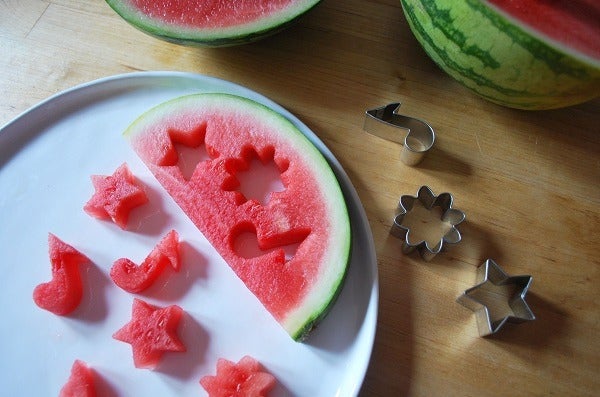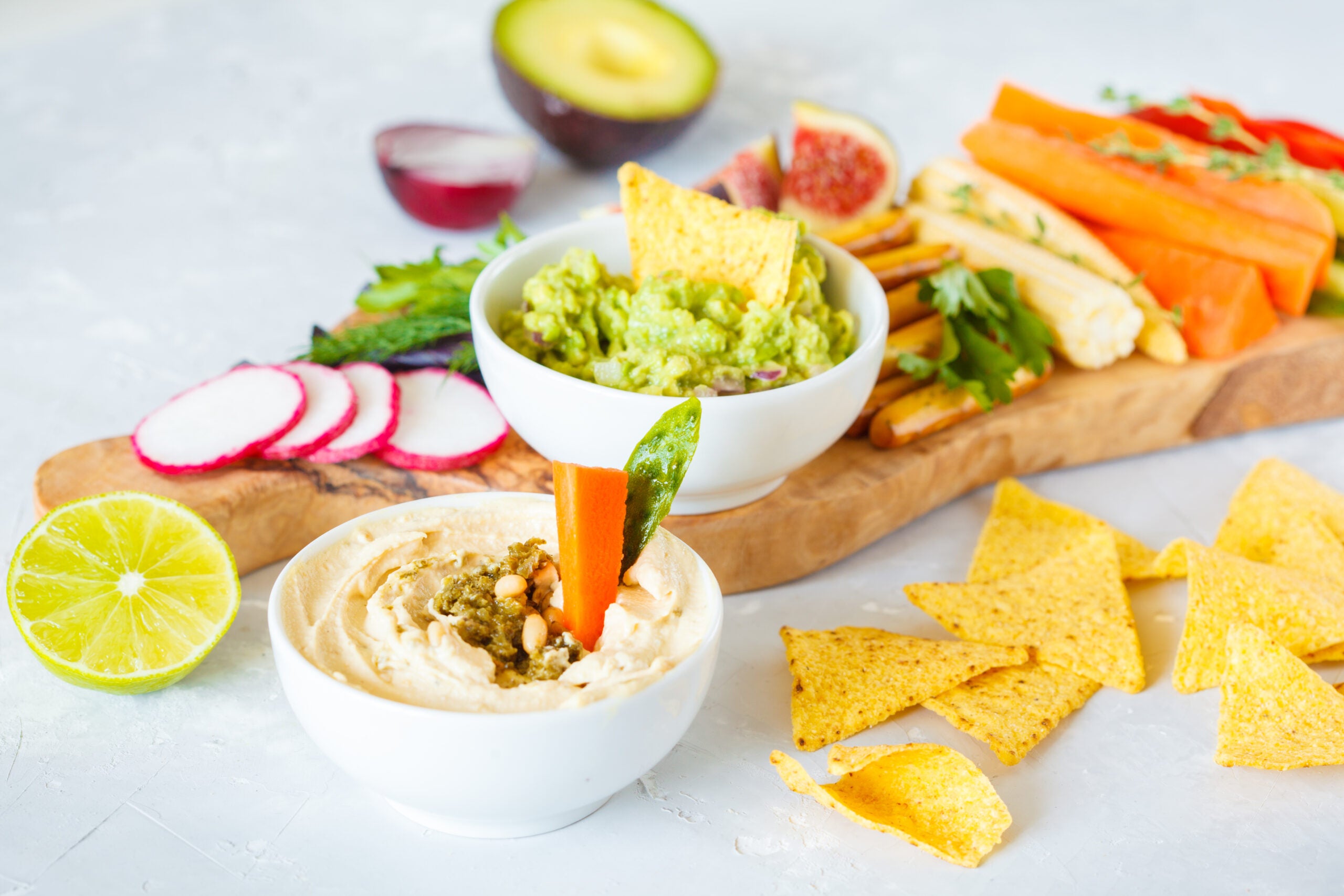Are snacks good or bad for you? A snack is generally defined as any food eaten between main meals. Many people snack at least once during the course of a day, and there are several reasons why. The most common scenario is that our stomachs start growling a few hours after our last meal. Another might be a dip an energy levels that a small bite can remedy. Or maybe we just look forward to the taste of certain snack foods.
Market research in the U.S. shows the most common snack choices are fruit, cookies, chips, ice cream, candy, popcorn, soft drinks, crackers, cake, milk, nuts and seeds, tea, and yogurt. [1] Snacks have been associated with both weight gain and maintaining weight, as well as with a lower or higher diet quality. [1,2] Although snacks can be a regular and important part of a healthy diet, they can also lead to health problems. What differentiates the two scenarios is one’s snacking behavior: what you snack on, why you snack, frequency of snacking, and how snacks fit into your overall eating plan.
Why and how Americans snack
The 2020 Food & Health Survey from the International Food Information Council revealed several insights into how Americans snack. [5]
- About a quarter of Americans surveyed said they snacked multiple times a day, and one-third snacked at least once daily. The most popular reasons for snacking were hunger or thirst, to be eaten as a sweet or salty treat, and because snack foods were easily available.
- Forty percent said they at least occasionally replaced meals by snacking (lunch being the meal most often replaced) and 25% sometimes skipped meals entirely.
- During the COVID-19 pandemic, more people under the age of 35 and parents with children under 18 years have reported snacking more than usual.
In children, snacking makes up about 27% of their daily calorie intake and there has been a substantial increase in snacking habits over the past few decades. [4] American children tend to consume snacks that are calorie-rich and nutrient-poor, which is concerning when more than 30% of children and adolescents are overweight or obese. [6] Data from the National Health and Nutrition Examination Survey show that children do not obtain enough calcium, vitamin D, fiber, and potassium, but have high intakes of calories, carbohydrates, and sodium. [6] Snacks such as low-sugar yogurt, fresh fruit, raw vegetables, and nuts can help provide these needed nutrients in young children and preadolescents while controlling excess calories.
The Pros and Cons of Snacks
Research has attempted to see if snacking has a positive or negative impact on nutrition and health outcomes—but without a clear answer. [7] This may be because of a lack of a common scientific definition of what is a snack. Studies find that snacking recommendations from public health organizations worldwide generally advise limiting snacks that offer little nutrition but are high in saturated fat, sugar, and sodium; they find that snacks provide at least 10% of daily calories, with a frequency of eating about two snacks per day. [7,8] The Dietary Guidelines for Americans 2020-2025 includes recommendations for nutrient-dense snacks, such as raw vegetables, fresh fruit, nuts, and plain yogurt. [9]
Benefits
- Provides a boost of energy if several hours pass between meals and blood glucose levels drop.
- Helps curb your appetite to prevent overeating at the next meal.
- Provides extra nutrients when choosing certain snacks like fresh fruit or nuts.
- Can help maintain adequate nutrition if one has a poor appetite but cannot eat full meals, such as due to an illness.
Pitfalls
- Unwanted weight gain if portions or frequency of snacking is too much, adding excess calories.
- Too much snacking can reduce hunger at meal times or cause one to skip a meal entirely, which increases the risk of losing out on important nutrients.
- Regular intake of ultra-processed hyperpalatable snacks that contain added salt, sugar, and fats but that are low in nutrients and high in calories can increase a preference for these types of foods, leading to a change in eating behaviors and diet quality (e.g., a higher intake of hyperpalatable snacks along with a decreased intake of healthful foods).
Power Snacking
The concept of meal planning can be applied to snacks. Take the time to incorporate snack planning to ensure that snacks work for you, not against you. Follow these simple steps and ask yourself:
- WHEN: Reflect on a typical day: what hours of the day between meals might you feel hungry or tend to grab extra food?
- WHY: If snacking occurs frequently, determine if you are truly hungry or eating because of an emotion (bored, stressed, tired, angry, etc.). If you are hungry, go to the next step. If you realize you are eating from emotion, consider using mindfulness strategies before snacking.
- WHAT: Decide which snack choices will satisfy you. A satisfying snack will alleviate hunger, be enjoyable, and help you to forget about food until your next meal! Think about the last snack you ate—did you still feel hungry or want to keep eating shortly after finishing one portion of the snack? Studies show that snacking on whole foods containing protein, fiber, and whole grains (e.g., nuts, yogurt, popcorn) enhance satisfaction. [4] But it’s also important to pause before making a snack choice to consider what will truly satisfy: if you choose an apple when you really want salty popcorn or a creamy yogurt, you may feel unsatisfied and want more. If you do not have a specific craving but are trying to quiet hunger, choose a snack that is high in fiber and water that will fill your stomach quickly. Consider these nutritious snack choices depending on your preference:
-
- Crunchy—raw vegetable sticks, nuts, seeds, whole grain crackers, apple
- Creamy—cottage cheese, yogurt, hummus, avocado
- Sweet—chopped fresh fruit, dark chocolate
- Savory/Salty—cube or slice of cheese, roasted chickpeas, handful of nuts, nut butter
- HOW MUCH: A snack portion should be enough to satisfy but not so much that it interferes with your appetite for a meal or adds too many calories. A general rule of thumb is to aim for about 150-250 calories per snack. This is equivalent to an apple with a tablespoon of peanut butter, or a string cheese with 6 whole grain crackers. If choosing a packaged snack such as chips, dried fruit, or nuts, read the Nutrition Facts panel to learn what is one serving, found at the top of the panel. Keep in mind that it is easy to eat two or three portions of some types of snacks!

Fun snacks for kids
- ¼ cup nuts, 1 cup shredded mini whole wheat squares (with no added sugar)
- Apple slices, ½ cup chickpeas roasted in olive oil and spices
- ¼ cup sunflower seeds or nuts, ¼ cup dried apricots, cherries, or raisins (with no added sugar)
- String cheese, 1 cup of grapes
- ½ cup blueberries or strawberries, 5 ounces of plain Greek yogurt
- Peanut, almond, or sunflower seed butter spread on a small 100% whole-wheat pita
- Carrot sticks or sliced veggies, hummus

Snack Recipes
Asian Trail Mix
Crunchy Roasted Chickpeas
Dried Fruit and Nuts
Green Lentil Hummus with Herbs and Olives
Lemon Chickpea Muffins
White Bean and Kale Hummus
Whole Wheat Banana Nut Muffins
Last reviewed February 2021
Terms of Use
The contents of this website are for educational purposes and are not intended to offer personal medical advice. You should seek the advice of your physician or other qualified health provider with any questions you may have regarding a medical condition. Never disregard professional medical advice or delay in seeking it because of something you have read on this website. The Nutrition Source does not recommend or endorse any products.
